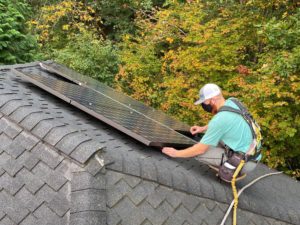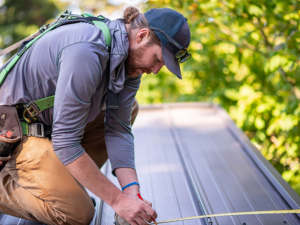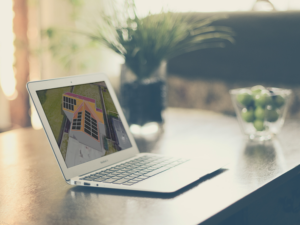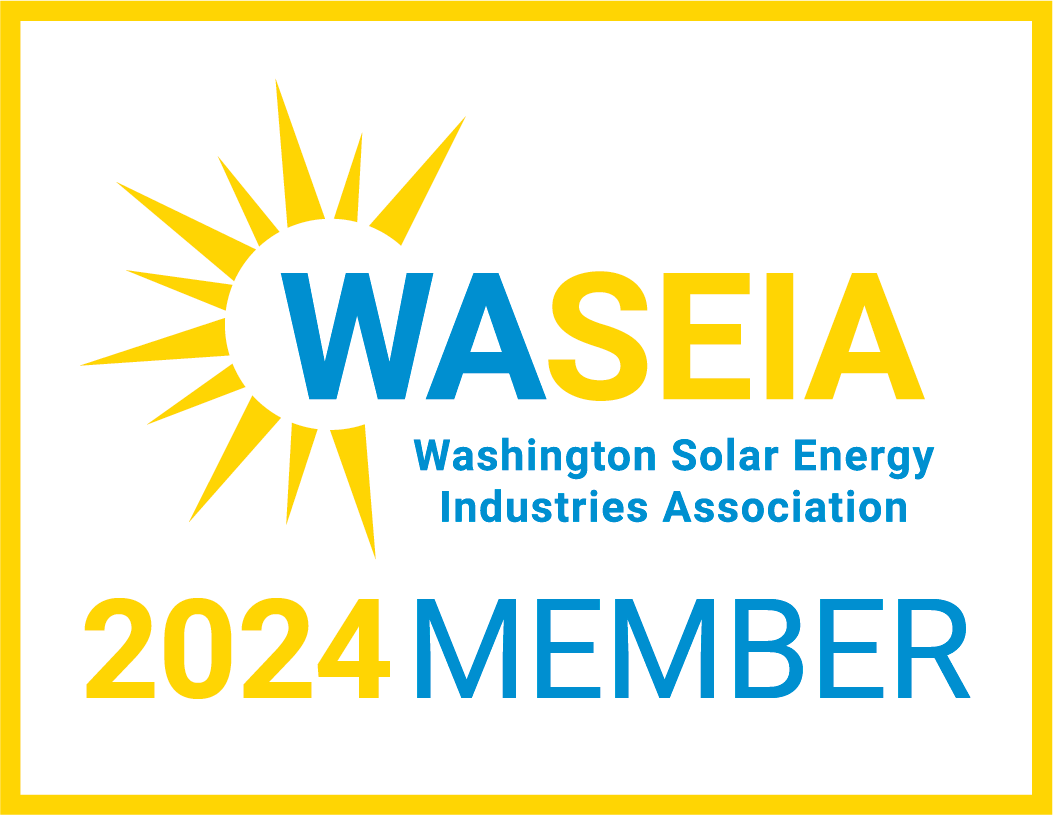Happy New Year! If last week’s snow storm and deep freeze are any indication, we’re definitely starting 2022 off with a bang!
Our office is up and running again after our holiday closure, and as we catch up on our messages, we wanted to post a quick note regarding system performance when it comes to snow accumulation. With additional snow forecast for some areas this week, here are our most commonly-received questions regarding solar and snow.
What do these monitoring alerts mean?
Depending on which monitoring your system has, you will likely receive automatic alerts warning of a production issue. Enphase will usually send a notification saying microinverters not reporting or a microinverter is reporting a production issue. This is normal behavior when the array is covered with snow, as the inverters will remain off until they receive enough sunlight to turn on and resume production.
As snow begins to slide off the array and the panels receive sunlight, individual inverters will start to turn back on and you’ll see production start to display. If there’s still snow on parts of the panels, you’ll see lower production until the snow clears completely. As production ramps back up, it can take a day or so for the alerts to clear, which is an automatic process. If after a couple days of the snow clearing completely you still see production alerts and/or panels not producing power, please let us know so we can investigate further.
Below is an example of what this looks like with Enphase, with photos of Markus’ system here in Bellingham, along with corresponding screenshots of that day’s monitoring:
December 25th:
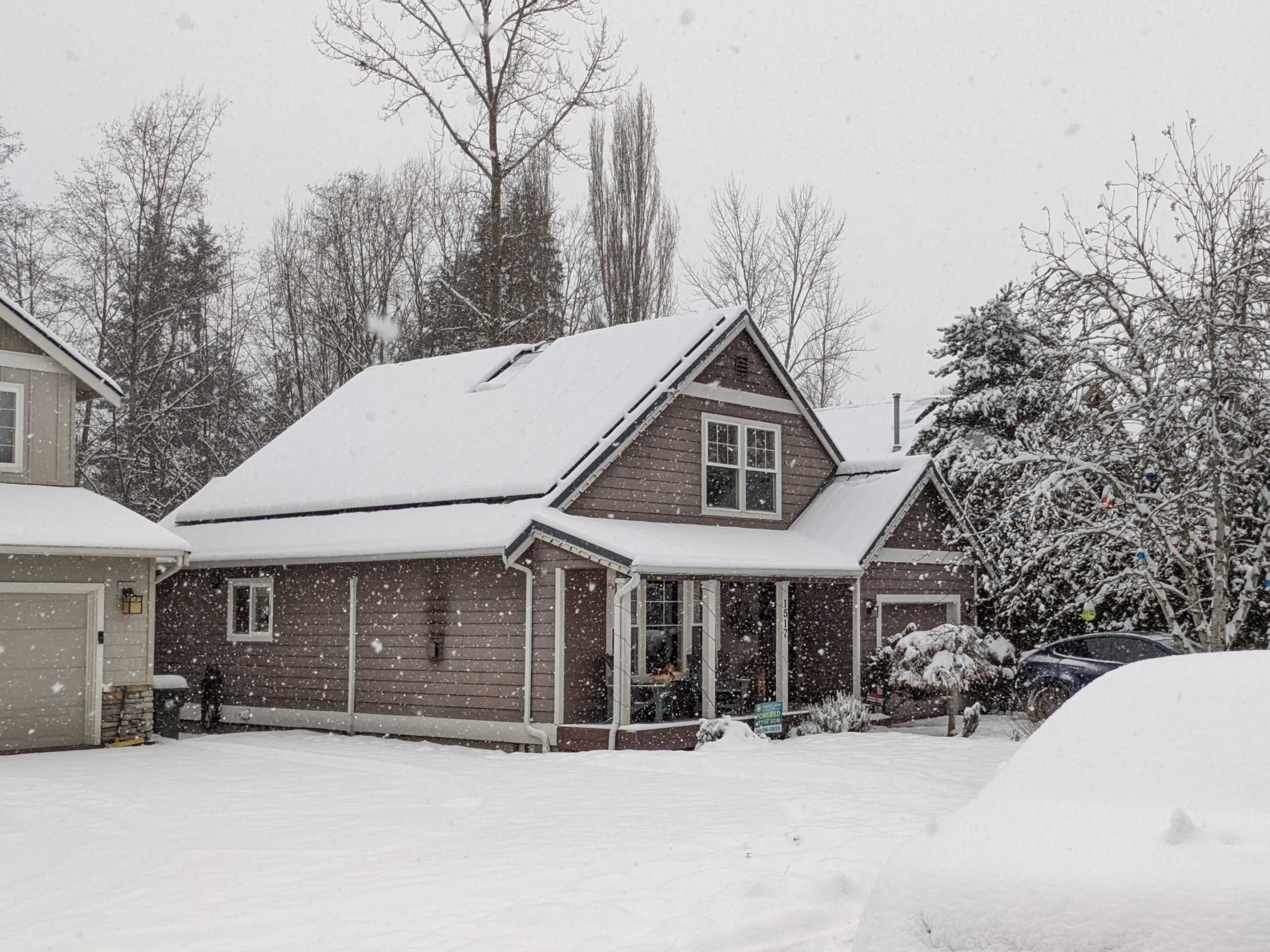
Solar modules covered in snow on Christmas Day.
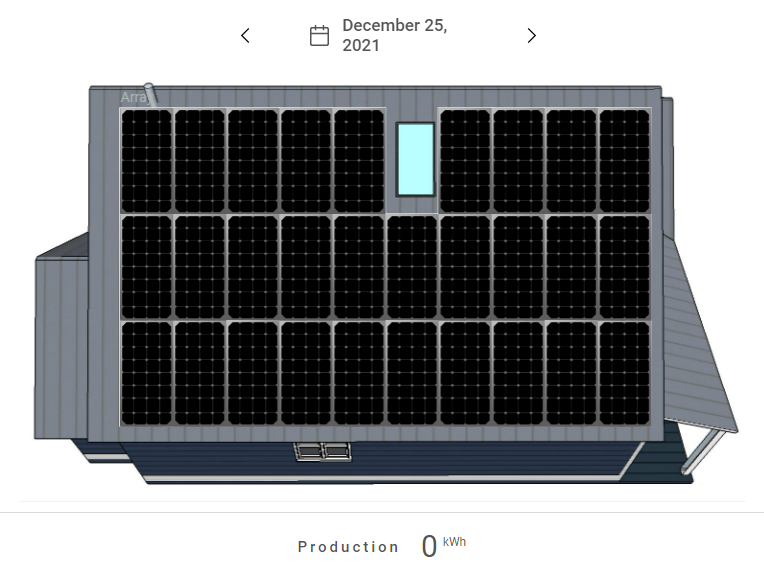
Enphase monitoring showing zero production.
December 30th:
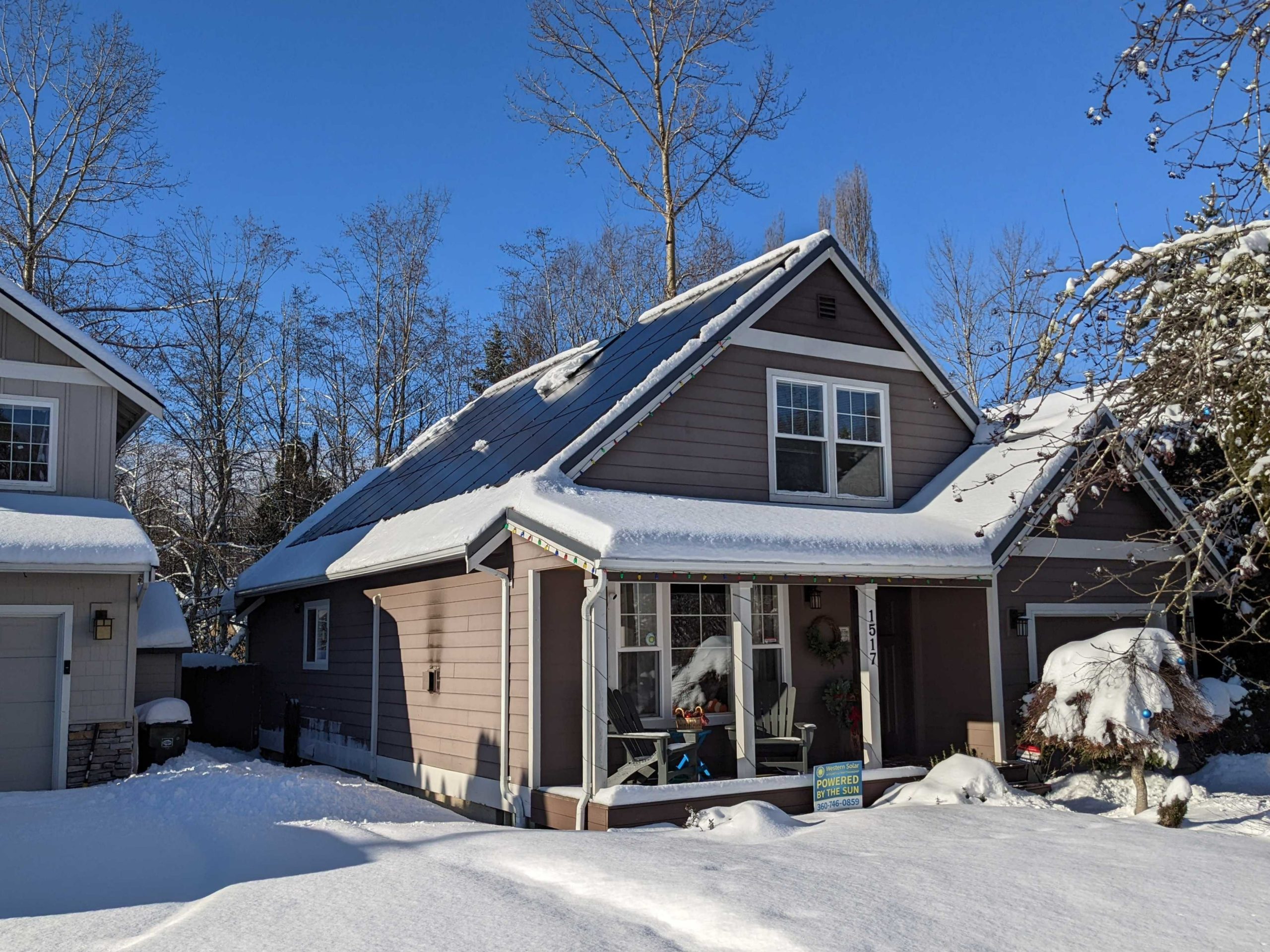
On the 30th, the snow slid off most of the panels on its own and the system turned back on.
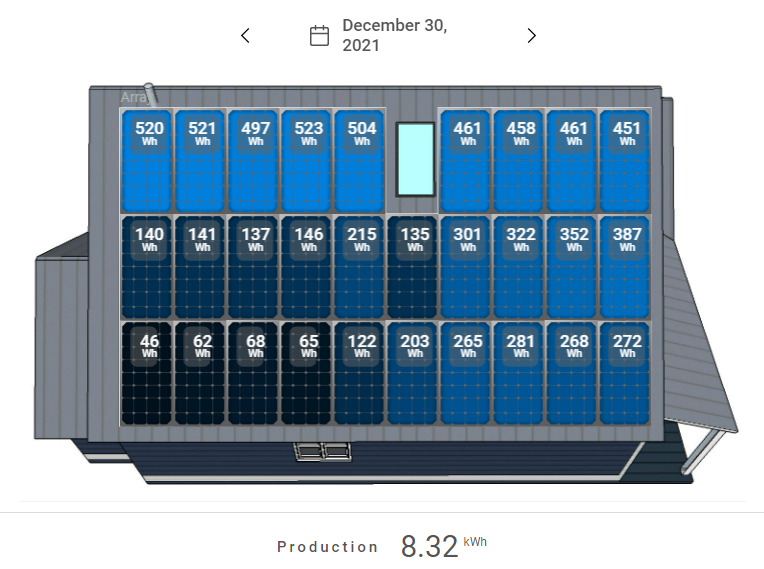
Production was still varied for a couple of days, due to shading and partial snow coverage.
In cases when the power has been out and returns, online production data may take a day or two to even out, as interference in the lines can cause disruptions in communication between the inverters and your communications unit. As recommended above, if any alerts remain after a couple of days since power came back, please reach out to us so we can take a look.
Make sure to take advantage of sun breaks to check on your system and ensure it’s actively producing. We have seen occasional instances of a tripped breaker or other resolvable issue that could impact production without routine checks.
If you have a string inverter, verify that no errors are shown on the display and review the process on how to verify current production statistics that are continuously displayed on your inverter’s LCD display.
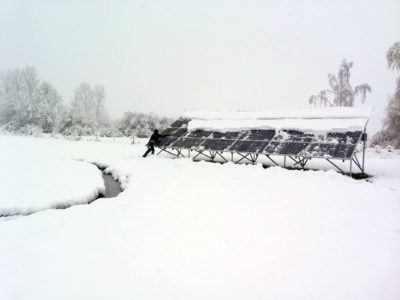
Cleaning snow off a ground mounted solar array
Should I clean off my panels?
First: BE SAFE. Roof conditions can be treacherous at this time of year, so if you absolutely must get on your roof, please use extreme caution. We advise waiting for it to thaw, as any potential production is not worth our customers’ safety.
As snow begins to melt, it will slide off your array onto the roof or ground below. We recommend checking to make sure your gutters are securely fastened, as ice and sliding snow can lead to higher than normal load on the gutter.
If you have a system with easy access, such as a ground mount, the snow can be swept off with a broom in order to allow for any ice to melt. We do not recommend scraping the ice off, as it could damage the panels underneath. Once the majority of the snow is removed, the sun will finish the job for you.
I’m interested in exploring an alternate heat source. Are ductless heat pumps back in stock?
They are! We’ve been working hard to source and stock an inventory of high-efficiency Mitsubishi ductless heat pumps. These are an excellent way to heat (and cool) your home using credits earned from your solar array. Even in super low temperatures, ductless heat pumps provide a more efficient way to heat your home compared to gas and standard electric.
Feel free to give us a call if you’d like to learn more about fuel switching and whether a ductless heat pump system would be good fit for you.
We hope this information is helpful as we enter into winter, and that you continue to stay safe and warm. If you need any additional clarification specific to your system, please reach out to us at 360-746-0859 or email info@westernsolarinc.com.

